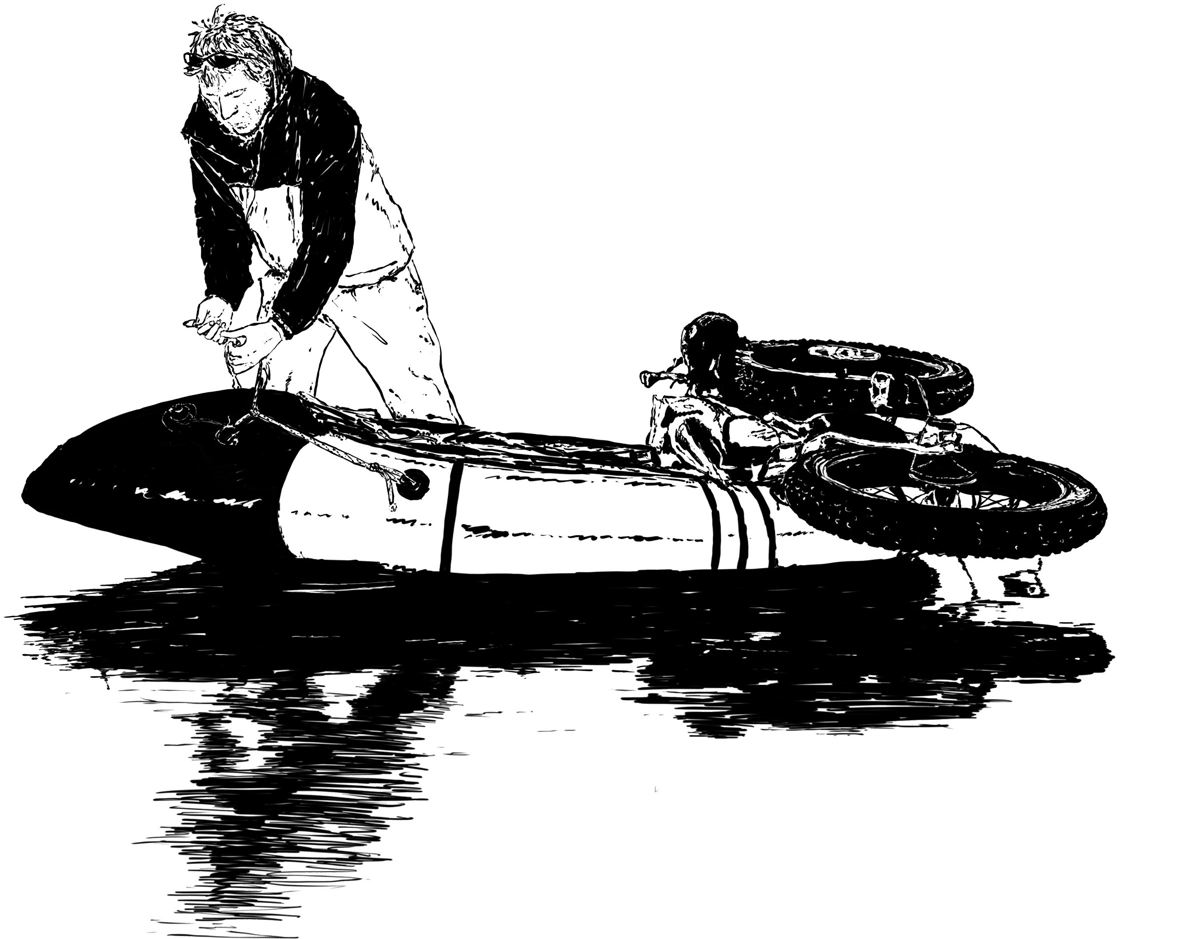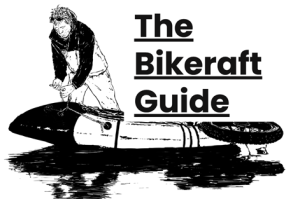In the 3rd in our series of The Bikeraft Guide Unboxing (aka "Unbagging") & More videos, we taste various breakfasts, coffees and dinners in the field made by Farm to Summit. As well, The Bikeraft Guide co-author, Lizzy Scully, visits the shop to talk with Louise Barden, founder and owner along with her wife, Jane.
Farm to Summit: Delicious, Local, Sustainable Dehydrated Backcountry Meals
Video & story by Four Corners Guides Packrafting & Bikerafting guide service owner, Lizzy Scully. Photos by Steve Fassbinder.
Jane and Louise founded Farm to Summit at the height of the pandemic in 2021! Good on them for getting this awesome company up and running during difficult economic times. Their sustainable dehydrated backcountry meals are fantastic, so I’m not at all surprised at their success. And there’s a heck of a lot more to like about this company than just the food!
First, it’s run by ladies. Being a female business owner myself, this resonates with me. Second, they are the only dehydrated food company to use sustainable packaging for all their meals. Their meal pouches are omnidegradable, which means they break down in any environment where microbes are present—even a landfill. And everything else is compostable, except the absorbers.
Third, Jane grew up on a farm, third generation, while Louis has a master in ecology. Both are avid outdoorswomen. Louise, in fact, backpacked extensively while a research ecologist, often for weeks at a time.
And being outdoorsy conservationists and lovers of fresh, locally-produced food, the ladies wanted to create a fully sustainable product that could potentially change the paradigm of what and how people eat in the backcountry. In addition to their sustainable packaging, the couple decided to purchase imperfect foods from local farmers in and around Durango those farmers would otherwise not be able to sell.
But, the best thing of all about their foods is they’re absolutely delicious vegetarian meals. I am super stoked to be able to provide my clients with this healthy, locally-sourced food. My favorites are the two curries, but I’ve tried all the flavors. None disappoint. And the coffees are particularly delicious!
An Interview With Farm to Summit Owner, Louise Barden
The Bikeraft Guide: Can you tell me your name and why you started a company making sustainable dehydrated meals?
Louise: I’m Louise one of the co-founders of Farm to Summit. We started the business three years ago, but really two years ago to people outside of Durango. We started it for a variety of reasons. But basically we wanted better food that was more ethically sourced. We wanted to support our local farmers. And we wanted packaging that wasn’t going to clog up the landfills anymore than they already are.
TBG: Tell me a little bit about how you get the food for your products.
Louise: Most of the produce is sourced locally. Our farmers drive up right behind the building. They unload everything into our coolers, and that’s what we use for our meals. Most of it is local and about 30% of it is upcycled. So things that would’ve gone to waste like crooked carrots or giant zucchini early season or late season kale, we’re able to use. We can use almost everything, which is pretty awesome. Our farmers are 15, 20 minutes away from our shop, so we go visit their farms sometimes they come here. It’s a really good relationship.
The Bikeraft Guide: And who does all the cooking?
Louise: My wife Jane and I do all the cooking. We also have a girl, Katie, who helps out. And we just hired on a new person, Marissa. So we have a small team and all the cooking happens right here. All the dehydration happens right here. The shipping, the packaging, everything is in-house.
TBG: Tell me how you got the idea to work with local farmers.
Louise: The idea for Farm to Summit came because I was working for the Forest Service and was doing a bunch of backpacking. Specifically I was on this really long trek and Yellowstone, for two and a half weeks. And we did two backpacking trips. I was with two guys who complained about the food endlessly, about how much they hated their backpacking meals and whatever. And basically we had 15 mile hikes every day pretty much. It gave me a lot of time to think and brainstorm. I thought, “I can make meals taste better than what they’re eating.”
And so I messaged Jane when I had service. I was like: “I have another business idea!”
We always shoot business ideas back and forth. Meanwhile, she was back home and volunteering on our friend’s farms. She was just helping out because she comes from a farming background and they were giving her tons of seconds produce.
So we were bringing home 10 pound bags of carrots, which is a lot of carrots for two people. But essentially the idea to use local produce came because Jane has such a passion for farming and was working with some local farmers in the area that are friends. And we thought, why not use local produce? There’s so many farms in this area, there’s awesome produce coming out of this area, and there’s a lot of seconds.
So it really evolved from the beginning. We were like, “Hey! Let’s make a company that’s making good food. Let’s make sure that food source locally, let’s use food waste.”
Then I wanted to make it as environmentally friendly as possible. So we decided to upcycle food and also make sure that the packaging is sustainable.
Lizzy: Could you talk a little bit about the development of the, you don’t have to give away trade secrets, but I’m just curious how you came up with your recipes.
Louise: The recipes are based off the farmers. We sent out all these emails asking our farmers what they had. And they had a lot of seconds.
So we let the farmers tell us what they wanted to provide. And then we made recipes off of it. So like the Thai Carrot Slaw has tons of carrots. It’s red cabbage, green cabbage and carrots. Those are the three most popular things that we grow in this region.
And carrots grow really weird. We have thousands of pounds of seconds in the cooler right now because when the soil gets compacted, they grow kind of chubby or they get little legs, whatever. And as you might know, our soil’s compacted. So we get funky carrots. That’s why there’s carrots in the oatmeal too. We wanted to put carrots in as many things as possible.
For the Garden Mac & Cheese, we found there was an overabundance of zucchini. Just like at your house, there’s always tons of zucchini. And it on the farm it comes on super quick. We needed a place to put it. So we made the garden mac and cheese.
Our recipes are really just an evolution of what we have. There’s tons of winter squash being grown. And we needed something to do with that. And we thought winter squash and a curry would be really nice. So we put a lot in the Harvest Green Curry.
The recipes really are just based on what the farmers have.
Lizzy: Can you tell me about your newest product?
Louise: The rainbow pasta resulted from a mistake. I bought the wrong size noodles. But we also wanted to make a meal for kids. There are so many kids going out in the backcountry. We wanted to be able to offer a product directed towards them, with the right number of calories, lower sodium, and a little bit of fun.
So we ended up dyeing some egg noodles with vegetables that we got from our local farms to make them super colorful. And then we infused the cheese powder with veggie dust. So we had these giant bins of dried veggies that we use for our meals. In the bottom of the bins there’s locally-sourced broccoli dust. And we were throwing it away! So we thought let’s put it in something. And it goes perfect in that pasta! It’s mostly for kids, but a lot of our friends actually eat it.
It’s really good. And we had a lot of adults wanting something lower calorie and lower sodium. And so that’s kind of like our, here, check that one
Lizzy: Are you the only company that has compostable and recylable packaging?
Louise: Yeah. When we started the search for packaging, we found out a lot about the packaging world. Mostly not good stuff. It’s hard to find good packaging. And it’s really difficult to find packaging that’s compostable and will break down the landfill. And we live in a small town, there’s not a big composting facility, so this stuff is going into a landfill.
But we found it. And our packaging will break down even in a completely anaerobic landfill situation, which is where most things end up. We’re the only backpacking food company that’s packaging in this sort of packaging. There is one company that offers it as an option occasionally, but they have mostly shifted to the cheaper plastics, which is understandable. The MLQ for these is super high.
So yeah, we’re just trying to do things differently. I mean, for us, these meals aren’t made for preppers. They’re not made for people that are wanting an emergency supply that’s going to last 15 years. Our meals are made for people that are really out adventuring, that are wanting to enjoy high quality food in a sustainable way. So we are able to use a packaging that starts to break down after two years. And people are using our product in two years. So we mark all of our best buys according to the time that it would take for our packaging to start to break down. That’s why our best buys are 18 months to two years.
To learn more about how they make their sustainable dehydrated meals and what they taste like, check out our YouTube video above!

